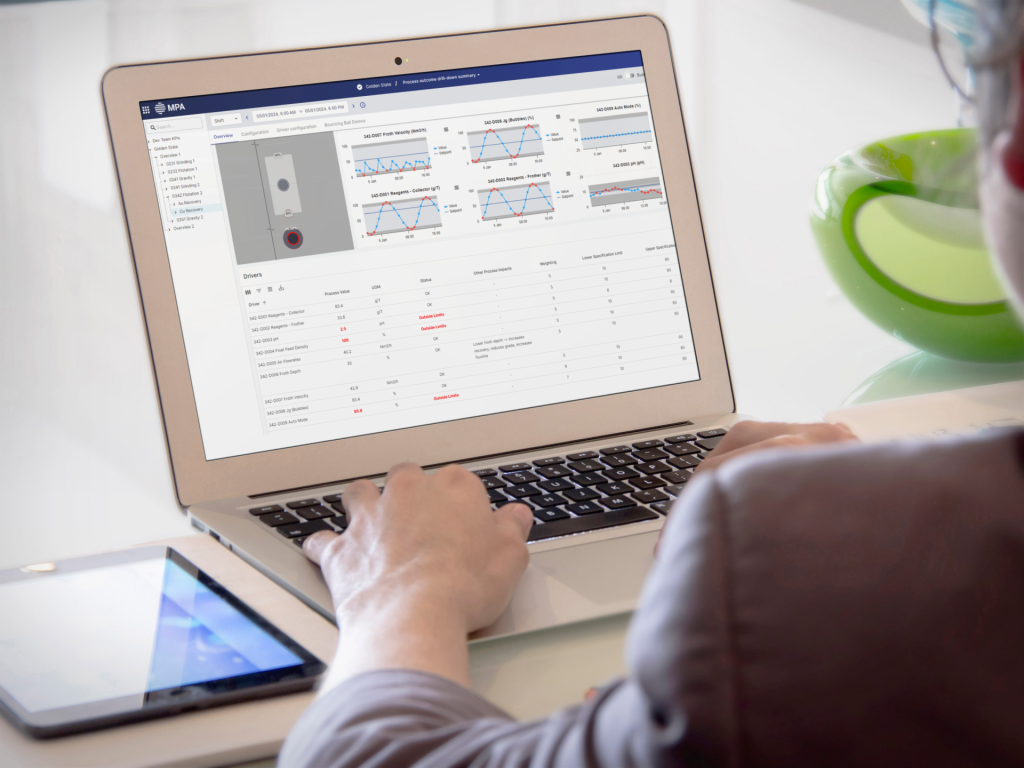This article is part of our Golden State content series, based on the webinar “From Chaos to Clarity: Navigating Process Variability with Confidence.”
👉 Watch the full webinar here to explore how leading sites are tackling variability with smarter thinking and real-time decision support.
Over 2025, the pressure on metallurgists and operations superintendents to deliver consistent performance has never been higher. Yet many teams still rely on gut feel, tribal knowledge, and siloed data to make critical decisions.
This article explores how leading sites are moving from inconsistent, experience-based decision-making to a standardised, data-driven approach, powered by Mipac’s Golden State application.

Why is decision-making still so inconsistent in mineral processing?
Even with modern control systems and dashboards, many plants still struggle with operational alignment. Different departments; metallurgy, operations, maintenance, often work from different data sources and mental models of what “good” looks like.
Add to that:
- Multiple crews with different operating styles
- Inconsistent shift handovers
- Retiring experts taking knowledge with them
- New operators learning on the job without structured guidance
The result? A process that’s reactive, variable, and hard to optimise.
What is tribal knowledge - and why is it a risk?
Tribal knowledge refers to the unwritten, experience-based know-how that lives in the heads of seasoned operators and metallurgists. While valuable, it’s also fragile. When experienced team members leave, that knowledge often disappears with them.
As we head to 2026, this is a growing risk. Many sites are seeing a generational shift in their workforce, and newer operators are expected to make fast, high-impact decisions without the benefit of years of intuition.
How Golden State helps standardise decision-making
Golden State, part of Mipac’s MPA suite, is designed to make decision-making consistent, transparent, and data-driven.
It does this by:
- Visualising process outcomes and their drivers in real time
- Providing a shared view across departments and shifts
- Highlighting deviations and their contributing factors
- Supporting structured responses based on defined triggers
Instead of relying on memory or gut feel, teams can see what’s happening, why it’s happening, and what to do about it, all in one place.
How does this help metallurgists and superintendents?
For metallurgists, Golden State becomes a platform for:
- Aligning teams on process priorities
- Reducing variability across shifts
- Supporting operator training and upskilling
- Driving continuous improvement
For operations superintendents, it provides:
- Confidence that decisions are consistent
- Visibility into how crews are performing
- A foundation for proactive planning and accountability
What does standardisation look like in practice?
Imagine this scenario:
- Every crew follows the same operating approach
- Deviations are flagged automatically
- Operators see the impact of their actions in real time
- Metallurgists can validate changes and track outcomes
- Production meetings focus on improvement, not blame
That’s what standardised decision-making looks like, and it’s what Golden State enables.
From gut feel to Golden State
In 2026, the most successful sites won’t just collect data; they’ll use it to align people, processes, and decisions.
Golden State helps you move from reactive, experience-based operations to a proactive, standardised approach that empowers every team member, from the control room to the superintendent’s office.
Want to see it in action?
If you’re ready to make your production meetings more effective, and your operations more agile, Golden State can help.
Read more in this series
Learn how metallurgists and superintendents are using Golden State to reduce variability and standardise decision-making in mineral processing in 2026.
Discover why process variability is still the silent killer in a mineral processing plant and how Golden State helps metallurgists…


